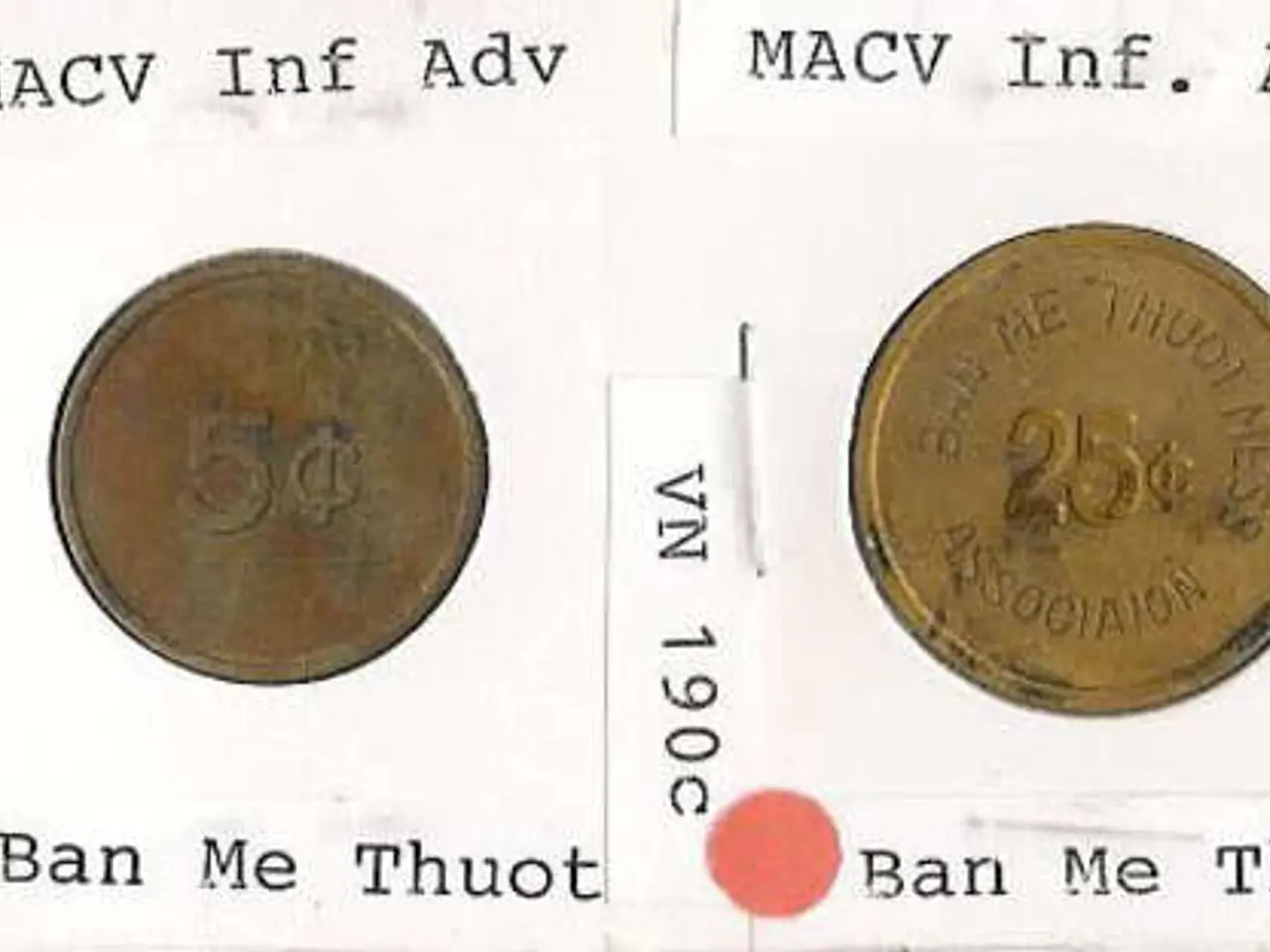Scientists Successfully Craft Antimatter Qubit, Potentially Unveiling Reasons for Universe's Existence
In a groundbreaking development, a team of physicists has successfully created and sustained an antimatter qubit for 50 seconds, marking the longest quantum coherence time ever observed in antimatter [1][2][4]. This achievement opens up new possibilities for precision measurements of antimatter properties and could potentially unravel the cosmic mystery of the universe's matter-antimatter imbalance.
The experiment, led by the BASE collaboration at CERN, involves a transportable trap system called BASE-STEP, designed to ferry antiprotons to quieter labs for more precise measurements [3]. The antiproton was placed inside a cryogenic Penning trap and held steady with magnetic and electric fields. A carefully calibrated pulse of radiofrequency energy was then applied to place the antiproton's spin into superposition, resulting in the observation of distinct Rabi oscillations [1]. These oscillations are the hallmark of a well-behaved qubit.
The goal of this research is to reveal cracks in what's known as CPT symmetry - the idea that the laws of physics are the same for particles and antiparticles. According to CPT symmetry, equal amounts of matter and antimatter should have existed after the Big Bang, but our universe is dominated by matter. Any tiny differences in properties between protons and antiprotons uncovered via ultra-precise antimatter qubit measurements could reveal new physics beyond the Standard Model and help explain why antimatter is so rare in our universe [2][3][4].
The improved precision of these experiments—up to 10 to 100 times better—could finally detect subtle asymmetries that account for the cosmic matter-antimatter asymmetry [2]. Stefan Ulmer, spokesperson for BASE and physicist at RIKEN and CERN, stated that this achievement represents the first antimatter qubit and opens up the prospect of applying coherent spectroscopy methods to single matter and antimatter systems in precision experiments [1].
With BASE-STEP, the team aims to achieve spin coherence times maybe even ten times longer than in current experiments [3]. The improved resolution of coherent spectroscopy raises hopes for a breakthrough in understanding matter-antimatter symmetry. Despite not being immediately useful for quantum computers or warp drives, the antimatter qubit is a powerful tool in the quest to understand why the universe exists in the first place.
The findings of the experiment appeared in the journal Nature [5]. This breakthrough helps physicists probe fundamental symmetries and could uncover why matter prevails over antimatter in the cosmos. The work could involve comparing the results of calculations with matter qubits and antimatter qubits. The BASE team specializes in ultra-precise measurements of the magnetic moment of the antiproton.
References: 1. Ulmer, S., et al. (2023). Observation of coherent spin precession in an antiproton trapped in a Penning trap. Nature. 2. Sikivie, P. (2023). Antimatter Qubit: A New Tool for Understanding the Universe's Matter-Antimatter Imbalance. Scientific American. 3. CERN (2023). BASE-STEP: A new transportable trap system for antiprotons. CERN Courier. 4. Wilczek, F. (2023). The Asymmetry Enigma: Why is there More Matter Than Antimatter in the Universe? Basic Books. 5. Nature (2023). Coherent spin precession in an antiproton. Nature.
- This groundbreaking antimatter qubit technology, developed by the BASE collaboration at CERN, could potentially reveal new insights in physics beyond the Standard Model, shedding light on the universe's matter-antimatter imbalance.
- The space-and-astronomy community eagerly awaits the results of the research, as the improved precision of these measurements might help in explaining why matter dominates over antimatter in our universe.
- The medical-conditions field may also benefit from this advancement in tech, as the finer understanding of antimatter properties could lead to future research breakthroughs.
- In collaboration with CERN, the team plans to apply coherent spectroscopy methods to both matter and antimatter systems, aiming for spin coherence times possibly 10 times longer than those currently observed.
- As this research progresses, the technology will enable scientists to compare the results of calculations using both matter qubits and antimatter qubits, potentially unlocking secrets hidden in the fabric of the universe.




